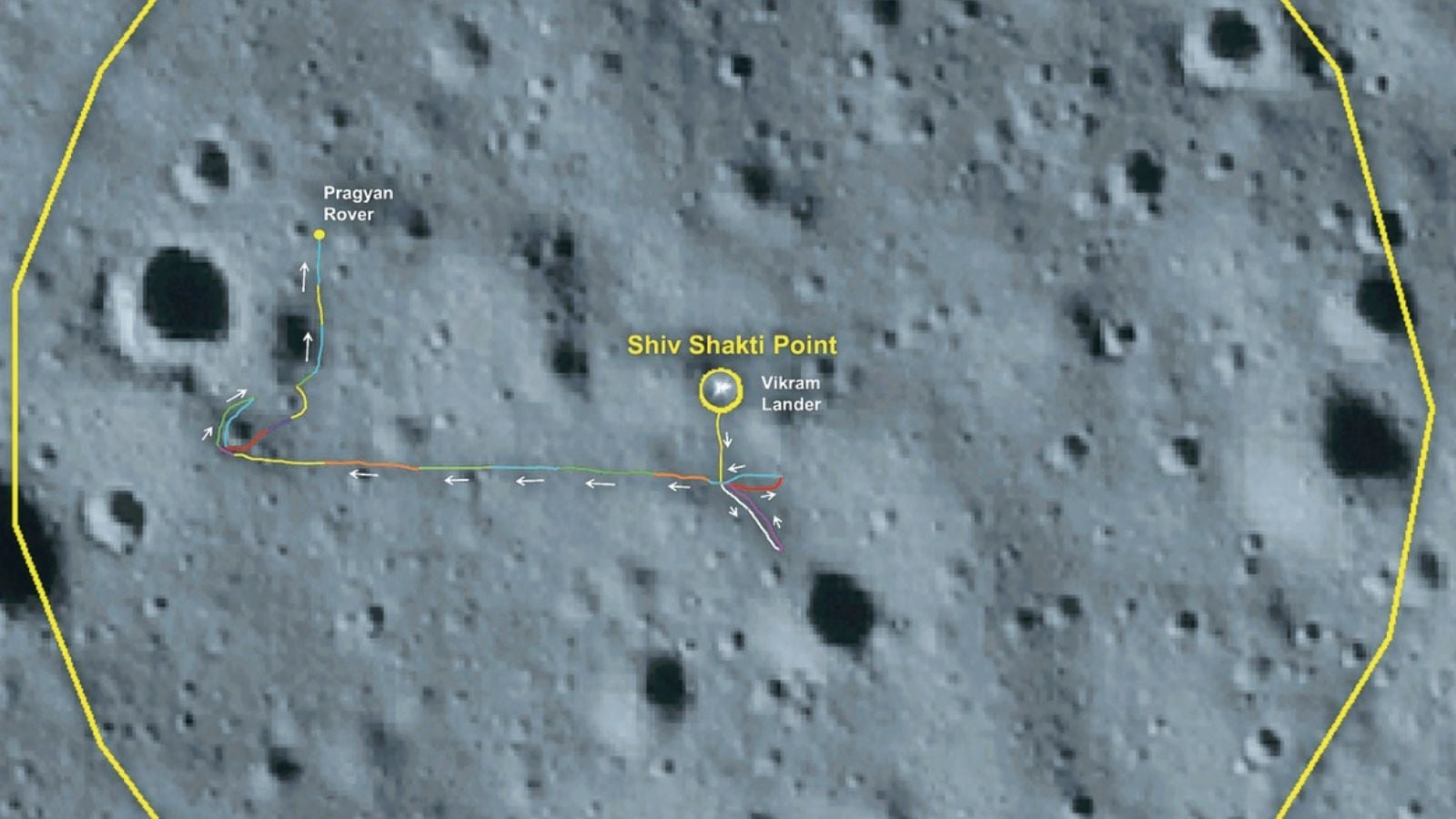The Shiv Shakti point, where the world’s first lunar landing was facilitated by India’s Chandrayaan 3 in 2023, could hold a promising potential site for scientists to study the most primitive mantle samples on the lunar surface.
The Shiv Shakti point is located at the southern high-latitude highlands of the nearside of the Moon. Scientists from Physical Research Laboratory (PRL) used data gathered by Alpha Particle X-ray Spectrometer onboard the Pragyan rover. They compared metal remnants and elemental concentrations of sulfur, potassium, sodium among others at the Shiv Shakti point where Chandra-yaan 3 landed on August 23, 2023. Sulfur, potassium and sodium can give insights into the mantle composition and chemistry.
“There is an anomalous depletion in sodium and potassium at the site, whereas there is an enrichment in sulfur found in the soils at the highland landing site,” said the study published in the journal Nature Communications Earth and Environment.
Detailing its significance and the plausible reasons for both depletion and abundance of certain metals, the researchers said,
“There is a potential presence of primitive lunar mantle materials at the landing site, which was excavated during formation of the South Pole-Aitken basin, around 4.3 Ga (billion years) ago and may have got redistributed by subsequent impacts on the SPA basin ejecta. While the primitive mantle contributed to the excess sulfur, it later got mixed up with the materials at the landing site,” the paper noted.
The South Pole-Aitken basin is one of the largest known impact craters on the lunar surface.
The low levels of sodium and potassium at the Shiv Shakti point, the researchers said, could suggest that these elements may not have originally existed at the place and time of the very formation of the SPA basin.
Story continues below this ad
The variations in the elemental concentrations revealed by Chandrayaan 3 data has overturned findings made by previous lunar missions — the Apollo 16 and Luna 20 by the US and the Soviets, respectively.
According to the PRL team, Chandrayaan 3 data noted the concentration of sulfur to be 300-500 parts per million higher than in soils gathered by the above missions. The Indian team is studying this anomalous difference in the concentrations and trace the causes at the landing site.
© The Indian Express Pvt Ltd






Average Rating